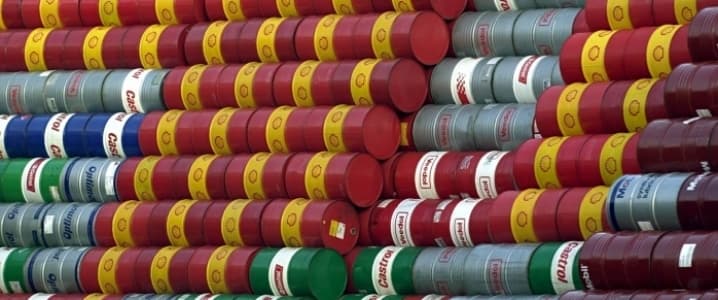As OPEC and its partners prepare to reveal the details of what most expect to be an output cut extension, all eyes in the oil industry are on U.S. shale output growth. Analysts and investors are parsing figures and projections about how much the U.S. production increase could unsettle the cartel’s efforts to ‘correct’ the supply side of the market.
But apart from the U.S., there are two other major oil producers in the Americas whose production is set to increase this year, and over the next five years: Canada and Brazil.
Alongside U.S. output growth, international agencies and OPEC itself expect production in Canada and Brazil to rise, potentially adding to the U.S. supply increase that diminishes the impact of the cartel cuts.
According to estimates by the IEA, global production capacity will grow by 5.6 million bpd by 2022, with capacity growth highly concentrated: the U.S., Brazil, and Canada combined are expected to account for 60 percent of global capacity growth.
In its Oil 2017 report, the IEA sees U.S. light tight oil (LTO) production continuing to grow through 2022, adding 1.4 million bpd over the period, even if oil prices fail to break US$60/barrel.
Over the next five years, Canada is expected to add 900,000 bpd of output, while Brazil’s production would add as much as 1.1 million bpd, according to IEA estimates. By 2022, the combined gain from these two countries could exceed the gains from U.S. shale in a $60 oil price scenario.
Related: Oil Prices Rise As Saudis Discuss OPEC Deal Extension With Iraq
Commenting on expectations for non-OPEC growth excluding the U.S. by 2022, the IEA said:
“The other countries that are expected to see their production increase significantly in our forecast period are Brazil, Canada and Kazakhstan, which will see their cumulative output rising 2.2 mb/d by 2022, reaping the rewards of investment decisions taken before oil prices declined.”
Brazil and Canada combined are also expected to increase their export potential by around 1.6 million bpd through 2022. This compares to just 500,000 bpd growth in OPEC countries’ net export flows, with expected growth from main Middle East producers offset by declines from elsewhere, according to the IEA.
While OPEC’s de facto leader Saudi Arabia and the most influential non-OPEC signatory Russia, are proposing to extend the production reduction into March 2018, OPEC’s latest Monthly Oil Market Report sees overall non-OPEC supply this year growing by 950,000 bpd. In addition to the growth in the U.S., higher oil production is expected in Canada, 220,000 bpd, and Brazil – 210,000 bpd, OPEC said.
Brazil had plans to increase oil production even before OPEC and friends decided to go for a collective production cuts. Last year, Brazil’s Congress approved a fundamental amendment to how its oil and gas deposits are developed, removing a requirement for state energy giant Petrobras to be the operator of every single new exploration and production project. The country is trying to lure more international oil companies to its offshore while Petrobras is struggling with huge debts.
Following the law amendment, Shell’s CEO Ben van Beurden said in November that his company would invest US$10 billion in Brazil over the next five years.
In December 2016, Wood Mackenzie predicted that the hot oil plays this year would be the U.S. shale, especially the Permian, as well as Brazil’s pre-salt.
“Both have materiality and development breakevens which are among the lowest globally,” WoodMac said back then.
Most recently, Petrobras said last week that together with its partners—which include Shell’s subsidiary BG E&P Brasil—it started oil and natural gas production in the area of Lula Sul in the Santos Basin pre-salt.
Related: Venezuela: The Brutal Consequences Of Oil Addiction
North of the U.S., companies in Canada are planning to raise production via new projects or production expansions. Suncor Energy, for example, expects to bring its major growth projects, Fort Hills and Hebron, to first oil by the end of the year.
ADVERTISEMENT
In the middle of last year, the Canadian Association of Petroleum Producers (CAPP) estimated that more than 850,000 additional barrels per day of oil sands supply will be available by 2021, noting that Canada needs new pipelines to meet growing supply.
At the end of last year, Canada conditionally approved two new pipeline projects: Kinder Morgan’s Trans Mountain and Enbridge’s Line 3.
So, Canada and Brazil—with project expansions and exploration investments—are increasing their respective outputs, much to the frustration of OPEC and its non-OPEC friends that are seeking to rebalance the market and lift oil prices.
By Tsvetana Paraskova for Oilprice.com
More Top Reads From Oilprice.com:
- Oil Prices Rise As OPEC Discusses Deeper Output Cuts
- Russia And The Saudis: An Oil Marriage Of Convenience
- ‘’Too Big To Hedge’’ Goldman Explains The Rationale Behind The OPEC Deal


















